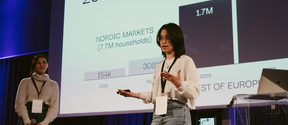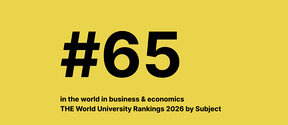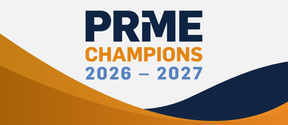Rare metals need efficient recycling

“The circular economy is often thought to encompass the bioeconomy and waste recycling. We at CloseLoop highlight the significance of rare metals as a part of the circular economy,” says Professor Maarit Karppinen.
CloseLoop is a joint Aalto University, VTT Technical Research Centre of Finland and University of Helsinki Consumer Society Research Centre research project. It is motivated by a global concern for the sufficient availability of rare metals.
Aalto is concentrating on researching and developing the refining and recycling processes of the chemicals and rare metals utilised in lithium-based batteries, which are used as energy stores. Thermoelectric devices, which generate electricity from heat, are another research subject.
Tailored processes
Demand for lithium batteries is growing strongly because of the electrification of traffic, although batteries are also used for grid energy storage.
“Less than one percent of lithium is recycled. If just one third of the existing fleet of cars were to be replaced by electric vehicles, lithium production would have to increase manifold,” expert Pertti Kauranen points out.
Only some five percent of batteries get recycled. Along with lithium, this squanders other metals like nickel and cobalt that batteries contain. Cobalt is a so-called critical raw material, listed by the EU Commission most recently in 2017.
Materials, which are classified as critical, are used in batteries, televisions, electric cars, fuel cells, permanent magnets, LEDs, laser technology, solar panels and many other technical applications.
Aalto is researching refining and recovery processes for lithium and other rare metals as well as developing entirely new recycling processes. Multiphase processes combine mechanical methods with high-temperature and solution chemistry.
“The processes are tailored for different raw materials. This is already being done when the starting point involves various virgin ores, concentrates and materials, which are recycled currently. Corresponding and improved tailoring should be performed also with respect to new recycled metals,” says Assistant Professor Mari Lundström.
Lundström says Aalto is conducting lots of applied research and engages in close cooperation with the industry. This provides a good toolbox for developing a circular economy for metals.
Substitute materials
In the thermoelectric effect, the difference in temperatures between a material’s warmer and colder side creates electrical energy. The vision is to convert the waste energy created by industry, traffic and even humans into electricity. This electrical energy could be stored in batteries.
Compounds containing bismuth and tellurium are nowadays used to make electricity-generating thermocouples. Both elements are relatively rare, and tellurium has been classified as a critical element. Thermocouples generate electricity with fairly poor efficiency, which has hindered the development of fresh applications. The poor heat endurance of materials has been problematic in, for example, applications that utilise waste heat from traffic.
“If there is a large increase in applications, the rarity of tellurium could become a problem. At CloseLoop, we are trying to come up with solutions in which bismuth and tellurium are replaced with more readily available raw materials. Zinc oxide, for example, is a common, safe and heat-resistant alternative material,” Maarit Karppinen says.
Designed to be recycled
A large-scale increase in battery-based electric car and electrical grid applications is, according to the research project’s leaders, only possible if the principles of the circular economy are applied to the design, manufacture and use of batteries.
“This is about a fundamental system-level change in thinking. Companies need to shift the focal point of their business operations from the selling of products to the provision of lifespan services. Equipment must be made durable, easy to service and repair,” says Pertti Kauranen.
Among other things, VTT’s interest in CloseLoop is to study how the ideas of the circular economy are changing society and affecting product design. The University of Helsinki researches consumer attitudes to the circular economy as well as possible means with which to influence consumer behaviour.
“Recyclability introduces new perspectives to materials development and research. Instead of only considering the optimal performance of individual materials and products, we should also examine the adequate availability and full lifespans of materials,” Maarit Karppinen emphasises.
She raises the importance of interaction in teaching. Introducing students to new paradigms also ensures the circular economy’s development.
Close cooperation
The CloseLoop project partners published a recommendation titled Making Finland a model country of battery production and the circular economy to decision-makers in January 2018. It notes that Finland could attract battery industry investments with an active industrial policy and through close cooperation between involved actors. A large battery factory would represent an investment worth at least a billion euro.
Finland’s attractiveness is boosted by our diverse mining industry and strong expertise in metallurgy. Finland is Europe’s biggest producer of nickel and cobalt, both of which are used in lithium batteries. A project to start producing lithium for refining is already in progress. Finland also produces battery chemicals.
“Companies and universities should further tighten their cooperation. Finland has a unique starting point for developing an industry based on recycling technologies,” Mari Lundström says.
Text: Timo Hämäläinen. Photo: Glen Forde.
This article is published in the Aalto University Magazine issue 22 (issuu.com), April 2018.
Read more news

Aalto University to host INNOVA Europe 2026 Grand Final in Espoo
Aalto University will host the INNOVA Europe 2026 Grand Final in Espoo, bringing together leading student-led startups from European universities.
Business & economics and computer science ranked in top 100 globally
The Times Higher Education ranking measures universities with 18 indicators, including international research and citations
The School of Business renews its status as a Champion member of the global PRME network for sustainability education for 2026–2027
Only two other Nordic universities were awarded Champion-level membership






